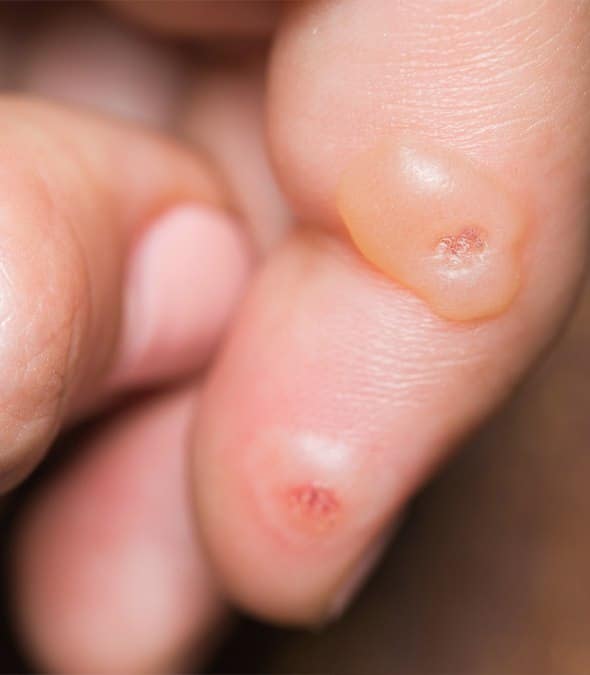Here to help you make informed decisions about your skin and health.
What are Blisters?
A blister is a soft area of skin filled with a clear fluid. Blisters may form in response to an irritant. Frequently, the blister is caused from friction, such as a coarse fabric rubbing repeatedly against a person’s skin. In other cases, blisters form in response to a chemical or allergic irritant, which is known as contact dermatitis. Some oral and topical drugs may cause blisters to appear. Blisters can also be symptomatic of bacterial or viral skin infections, such as cold sores, chicken pox, shingles, impetigo or ringworm. Lastly, blisters occur when the skin is exposed to a flame, comes in contact with a hot surface or is overexposed to the sun.
Most blisters do not require medical attention. The most important information to remember is never to pop or break open a blister. A blister acts as a protective covering for damaged skin and helps prevent infection. If a blister does open on its own, be sure to leave the covering in place to support further healing. Simply wash the area gently with mild soap and water, pat it dry and apply an antibacterial ointment. Cover the blister with bandage to keep it clean. Replace the dressing at least once a day. Watch for signs of infection, such as a white or yellow pus coming from the blister, redness or red streaks around the blister or an increase in skin temperature around the blister.
To avoid blisters, you need to eliminate the irritant. Some simple ways to avoid blisters are to avoid tight clothing, make sure socks and shoes fit properly, and when doing heavy work with your hands, wear work gloves.

Have questions or concerns? Please call us at 740.454.7546.
